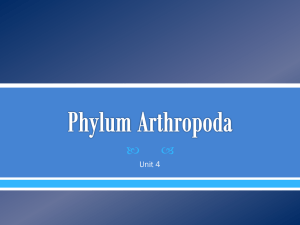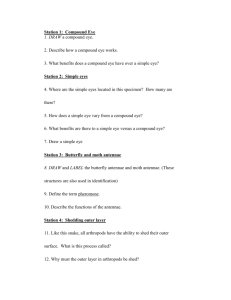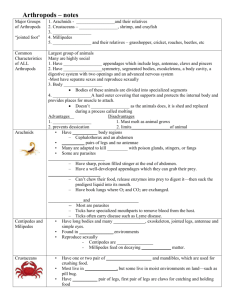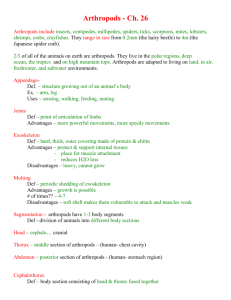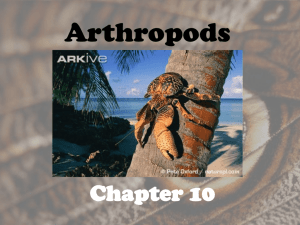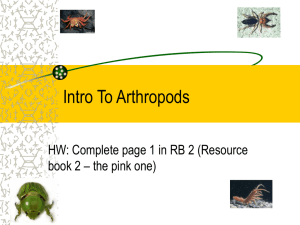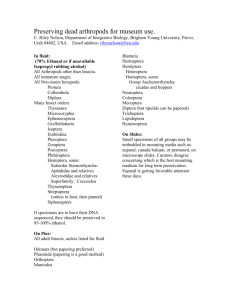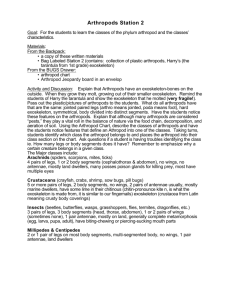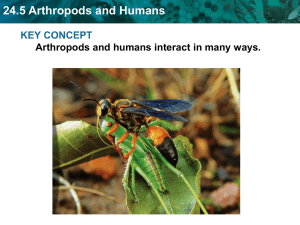Arthropods - The Biology Corner
advertisement
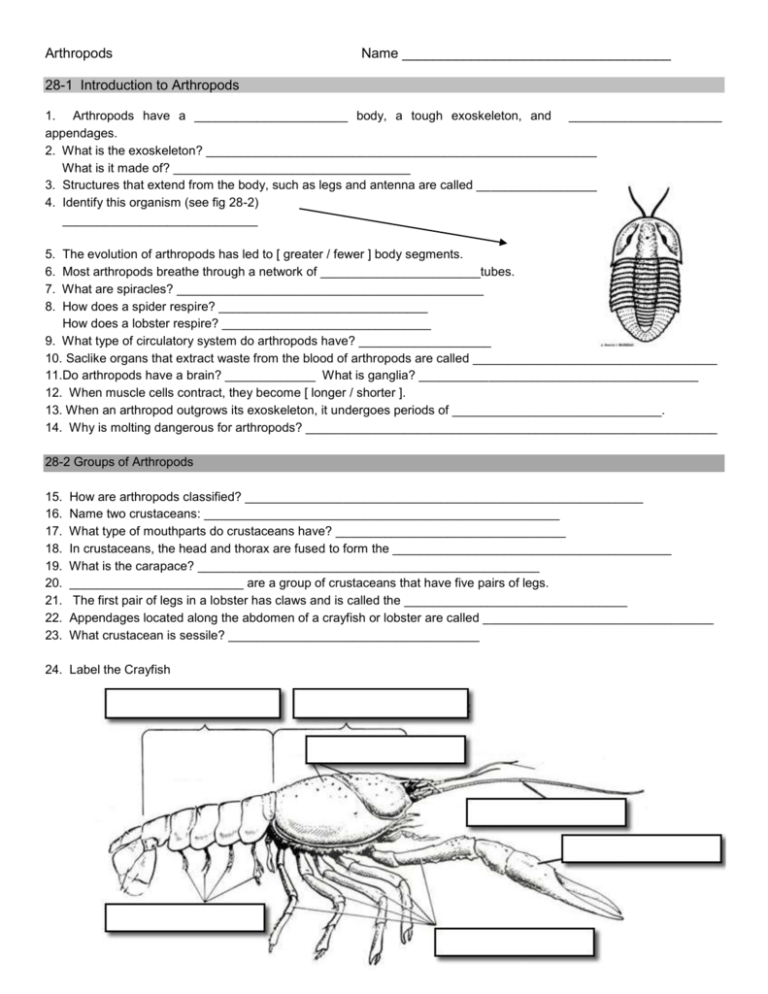
Arthropods Name ___________________________________ 28-1 Introduction to Arthropods 1. Arthropods have a ______________________ body, a tough exoskeleton, and ______________________ appendages. 2. What is the exoskeleton? ________________________________________________________ What is it made of? __________________________________ 3. Structures that extend from the body, such as legs and antenna are called _________________________ 4. Identify this organism (see fig 28-2) ____________________________ 5. 6. 7. 8. The evolution of arthropods has led to [ greater / fewer ] body segments. Most arthropods breathe through a network of _______________________tubes. What are spiracles? ____________________________________________ How does a spider respire? ______________________________ How does a lobster respire? ______________________________ 9. What type of circulatory system do arthropods have? ___________________ 10. Saclike organs that extract waste from the blood of arthropods are called ___________________________________ 11.Do arthropods have a brain? _____________ What is ganglia? ________________________________________ 12. When muscle cells contract, they become [ longer / shorter ]. 13. When an arthropod outgrows its exoskeleton, it undergoes periods of ______________________________. 14. Why is molting dangerous for arthropods? ___________________________________________________________ 28-2 Groups of Arthropods 15. 16. 17. 18. 19. 20. 21. 22. 23. How are arthropods classified? _________________________________________________________ Name two crustaceans: ___________________________________________________ What type of mouthparts do crustaceans have? _________________________________ In crustaceans, the head and thorax are fused to form the ________________________________________ What is the carapace? _________________________________________________ _________________________ are a group of crustaceans that have five pairs of legs. The first pair of legs in a lobster has claws and is called the ________________________________ Appendages located along the abdomen of a crayfish or lobster are called _________________________________ What crustacean is sessile? ____________________________________ 24. Label the Crayfish Spiders and Their Relatives 25. Name two chelicerates: _______________________________________________________ 26. Do chelicerates have antennae? _________________ 27. What pair of appendages have fangs? ___________________________________________ Which pair of appendages are used to grab prey? ___________________________________ 28. Name an aquatic chelicerate: ________________________________________________ 29. Name two animals in the class Arachnida: ______________________________________________ 30. Since spiders cannot chew their food, how do they digest it? __________________________________ 31. What organs contain silk glands? _________________________________________ 32. What arachnid can spread Lyme Disease? ________________ 33. What arachnid has a venomous stinger? _____________________ Analyzing Data (p. 724) 34. What are two symptoms of Lyme disease? ___________________________________ 35. Is Illinois a state with an incidence of Lyme disease? _______________ What about New Mexico? ___________ Insects and Their Relatives 36. Centipedes, millipedes, and insects belong to what SUBPHYLUM? _______________________________________ 37. What do centipedes eat? _______________________________ 38. Centipedes belong to the Class _________________________; Millipedes belong to _______________________ 39. What do millipedes eat? ____________________________________ 40. What do millipedes do when they are disturbed? ______________________________________________ Matching: Match the characteristic to its arthropod group 1. ____ Many segments, two pairs of legs per segment A. Crustaceans B. Arachnids 2. ____ Chelicerae and pedipalps C. Centipedes 3. ____ Two body segments, no antennae D. Millipedes 4. ____ Two body segments, two pairs of antennae 5. ____ Includes horseshoe crabs and ticks 6. ____ Has chelipeds 7. ____ Many segments, one pair of leg per segment, venomous 8. ____ Includes lobsters, crabs, and crayfish 9. ____ The largest group of arthropods 10. ____ Can spread Lyme disease the class

